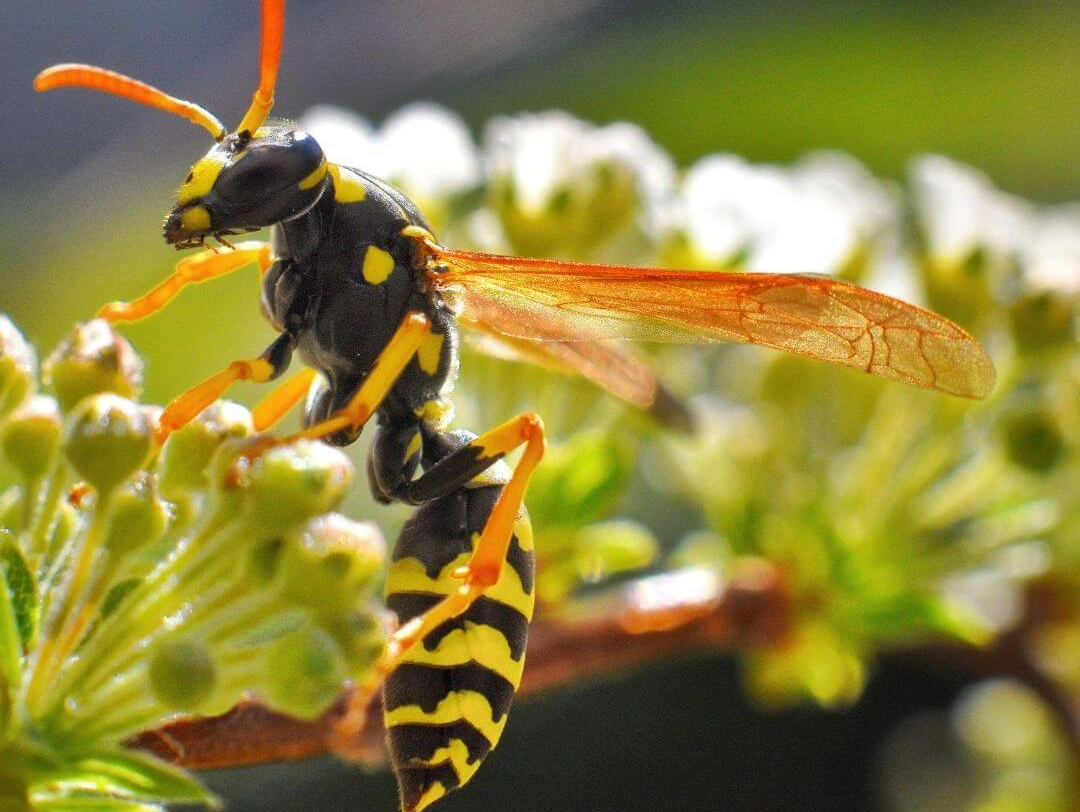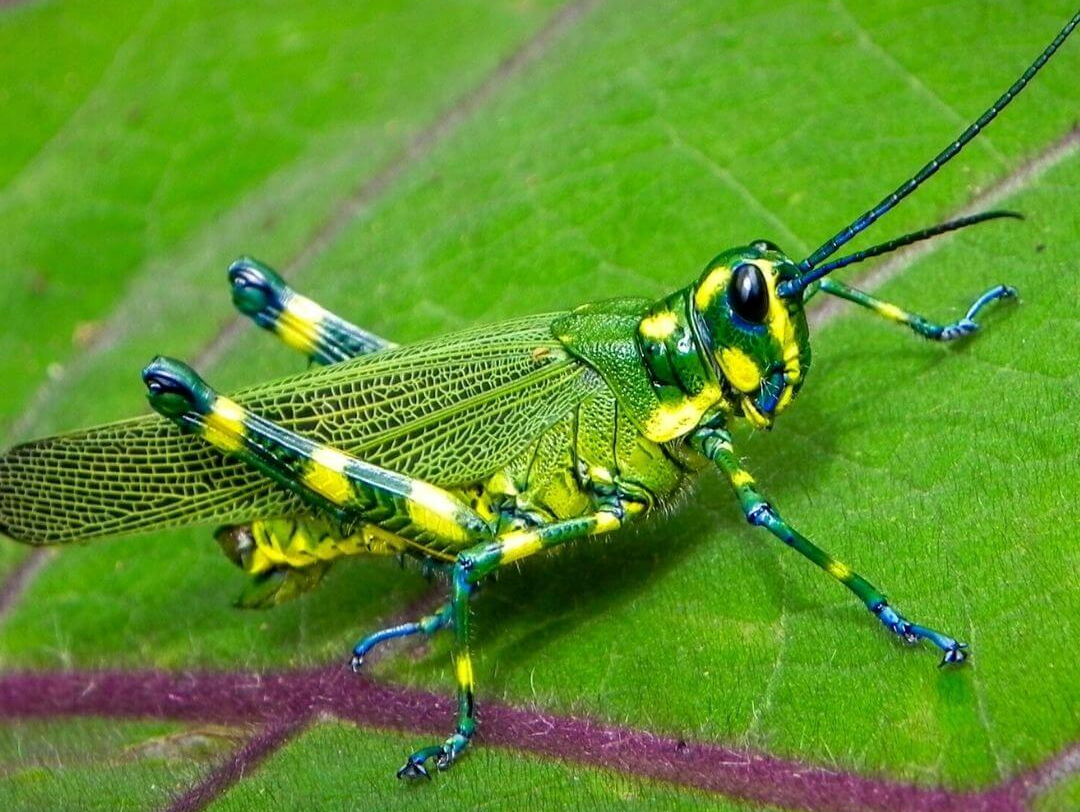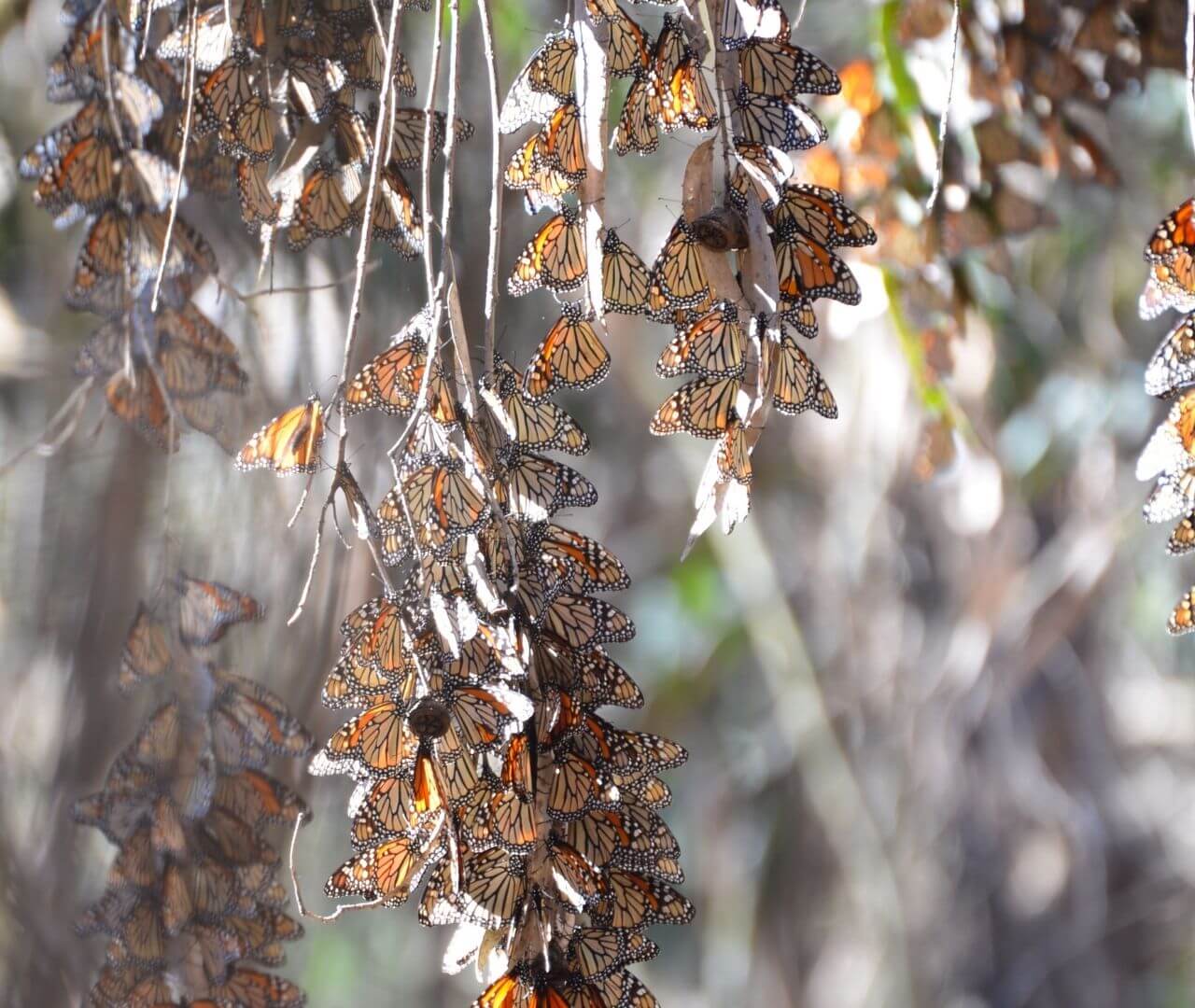Insect Metamorphosis

How Do Insects Metamorphosize?
Word of the Week
Pupa
The pupa is the inactive life cycle phase of an insect between the larval phase and the adult phase!
A butterfly pupa is inside a chrysalis. This is when they change from a caterpillar into an adult butterfly.
Complete and Incomplete Metamorphosis
Many insects go through a complete metamorphosis changing dramatically in each phase. However, some species of insects go through an INCOMPLETE metamorphosis!
Let's take a look at what that means.
Complete Metamorphosis
- Has 4 phases: Egg, larva, pupa, and adult
- Change is dramatic between all phases
- Insects are very active (and hungry) during their larva phase
- Insects are inactive during the pupa phase
- Insects cannot reproduce until their adult phase
Examples: Butterfly, moth, wasp, ladybug, ant
Incomplete Metamorphosis
- Has 3 phases: Egg, nymph (larva), adult
- Change is gradual
- Nymphs look like smaller versions of the adult
- Sometimes, the only difference between nymph and adult is that adults have wings
- Nymphs are active and grow slowly
- Insects can reproduce before reaching adulthood
Examples: Dragonfly, grasshopper, praying mantis, cockroach
Why Is Metamorphosis Beneficial?
Avoid Competition
In their larval phase, animals often live in different habitats and eat different food than the adults, which helps them avoid competition!
For example, caterpillars live on plants and eat their leaves, while adults can move from plant to plant to drink nectar.
Avoid Harsh Climate
Some species are strategic about the time of year they lay eggs. Many short-lived species lay eggs in the spring when there are lots of resources for their offspring.
Some other species, like the yucca moth, lay their eggs so their offspring will be in their chrysalis during the cold winter.
Species Specific
Some insects can speed up or slow down the different phases of their metamorphosis based on the climate.
Some moths and butterflies will remain in their pupas until spring when flowers start to bloom, while many insect eggs can hatch quicker when temperatures are warm.
Species Spotlight
Monarch Butterfly
Danaus plexippus
Monarch butterflies are one of the most well-known insects in North America, partly because of their large range and ability to travel. Monarchs are one of just a few migratory insects in the world. During the summer, Monarchs are found across most of the United States and Canada where they feed on nectar and lay eggs. In the fall, they travel south to warmer regions (in Mexico and southern California) to avoid freezing cold temperatures. In the spring, they start their journey north looking for mates and milkweed plants to lay their eggs on.
Many butterflies require specific plants (called a host plant) to provide food to their caterpillars once they hatch from the eggs. Monarch caterpillars eat leaves and stems of milkweed plants and grow rapidly for about two weeks before forming their chrysalis and entering adult phase. Most monarchs only live for a few weeks once in their adult phase, requiring them to breed and lay eggs so their offspring can continue the migration. The last monarchs to hatch in late summer migrate south to their wintering grounds. These special monarchs can live up to 8-months. Monarchs have one of the most complex migration patterns of any animal!
BRAIN BLAST
Identify what butterflies live in your area. Research them to see what their host plants are and then plant a garden at your school or home. Don't forget the milkweed if you live near monarch butterflies!
Conservation Corner
Monarch Waystation
Monarch butterfly populations are at risk, and you can help! Monarch butterflies depend on milkweed plants during their caterpillar phase. During their adult butterfly phase, they depend on flowering plants that produce lots of nectar! Because of the city and farm development, monarch butterfly habitat is quickly disappearing. Many milkweed plants and nectar sources are now found in agricultural areas where herbicides and other chemicals can harm monarchs.
Because monarch butterflies migrate, they need milkweed and nectar sources across a wide range. This is where you come into play by making a monarch waystation! Monarch waystations are gardens that you can create at home or school with milkweed plants and plants that produce lots of nectar. These waystations become pitstops for migrating monarchs to lay their eggs and fuel up on nectar. Click the link below to see what plants to add to your monarch waystation and how to register as an official waystation!
Insect Investigation
Determine if the characteristics below are part of complete metamorphosis, incomplete metamorphosis, or both by dragging them to the correct boxes.
Glossary
Adaptation
The process by which a species becomes more fit for its environment over the course of several generations. It is a result of natural selection.
Adult Phase
The phase of an insect's life cycle following the larval phase in which they are able to reproduce.
Aquatic
Living in water.
Egg
An object laid by a female insect (and other species) that contains a developing embryo.
Environmental Factors
Any part of an ecosystem, living or nonliving, that impacts a living organism.
Larva
The aquatic phase of an amphibian's life cycle occurring after the amphibian exits the egg.
Metamorphosis
The process of an animal changing and developing from an egg to an adult through different life phases.
Migration
The process of an animal moving to a new location often during a specific season.
Nymph
The larval phase of an insect during incomplete metamorphosis.
Pupa
The inactive phase of an insect's life cycle following the larval phase when they transition to their adult phase during complete metamorphosis.







